The Silverstone ST30SF & ST45SF SFX Power Supply Review
by E. Fylladitakis on January 26, 2017 9:00 AM EST- Posted in
- Cases/Cooling/PSUs
- PSUs
- 80Plus Bronze
- SilverStone
- SFX
- ST30SF
- ST45SF
External Appearance
The ST30SF and the ST45SF are externally identical, with the only apparent physical difference being the sticker on the side of their chassis. Even when it comes to the cables and connectors, the ST45SF only has one extra 8/6-pin PCIE connector, hinting that SilverStone expects the ST45SF only to be used if the PSU has to power a modern gaming graphics card. The designer’s logic is sound, as the number of drives that can be installed inside a compact chassis that has been designed for SFX PSUs usually is very limited, leaving no other device to require substantial levels of power other than a powerful GPU.
The ST30SF and the ST45SF feature a simple steel chassis that has been sprayed with a typical matte black paint. It is a very smooth paint job but the paint is highly prone to fingermarks. SilverStone placed the sticker with the electrical specifications on the left side of the chassis and small stickers with the unit’s serial number, version, etc., on the right side of the chassis. You can easily tell if the units are the latest or an older version by just looking at their fans: the newer ST30SF V2.0 and the ST45SF V3.0 models have 92 mm fans that barely fit into the body of the PSU, the older versions were using smaller 80 mm fans.
The company logo is once again engraved at the top of the unit, a technique that SilverStone performs on most of their PSU products to date. Despite the very small size of the chassis, the designer managed to find room for a small on/off switch next to the AC cable receptacle. The front of the PSU is plain, with just a hole for the hardwired cables to come out from. The cable arrangement is typical for the price range of these units, with color-coded wires covered in black nylon sleeving.
Internal Design
Whereas the ST30SF and the ST45SF externally are practically twins, there are significant differences on the inside of the units, which was to be expected considering that the ST45SF has 50% greater power output over the ST30SF. The first slight difference is their fan. Both of the simple black 92 mm low profile fans are supplied by Globe and are of the same series, but they are different models, with the ST30SF having a S0921512M and the ST45SF having a S0921512H installed. These fans have a “DURO” bearing engine, which is an enhanced version of a sleeve bearing that has been engineered for longevity. Their difference is that they have different speed ratings, with the former having a maximum speed of 2500 RPM and the latter of 3000 RPM.
A quick look on the inside reveals that both units share the same OEM and are based on the same platform, however there are great differences on the sizing of their components. Regardless of the electronic component sizes, it is worthwhile to mention that the main heatsinks remain identical, hinting that the extra cooling required to dissipate the higher energy losses of the ST45SF will be coming from its more powerful cooling fan. High Power is the OEM behind these two PSUs, a company mostly reputable for their balanced performance-to-cost designs.
The core design of the ST30SF/ST45SF is relatively simple technologically, with the designer obviously striving to deliver reliable, high quality power without caring about maximizing the product’s efficiency. Both units share the same components up to the input conversion bridge, with a filtering stage consisting of four Y capacitors, two X capacitors and two filtering inductors. The only difference here virtually is that the input conversion bridge of the 450W version has its own heatsink whereas the bridge in the 300W version has no heatsink at all.
SilverStone ST30SF Internal View
From here on, the design of both units remains the same but the size of the electronic components, both active and passive ones, differs greatly. The most apparent difference is the primary APFC capacitor, with a 180μF/400V capacitor in the ST30SF and a nearly a twice as large 330μF/400V capacitor in the ST45SF. Both are supplied by Japanese companies, Nichicon and Nippon Chemi-Con respectively. The smaller electrolytic capacitors in both units are supplied either by Nippon Chemi-Con or by Teapo, which is a good quality selection of products for cost-efficient PSUs.
SilverStone ST45SF Internal View
Two transistors on the primary side of the transformer form an asymmetric half-bridge inversion stage and four transistors on the secondary side form the synchronous rectifier for the 12V output. The 3.3V and 5V outputs are generated by DC-to-DC circuits found on the small vertical PCB. Despite the presence of the DC-to-DC conversion circuits and the synchronous rectifier, these units only reached up to an 80Plus Bronze certification, hinting that we might be dealing with high internal temperatures at higher outputs.


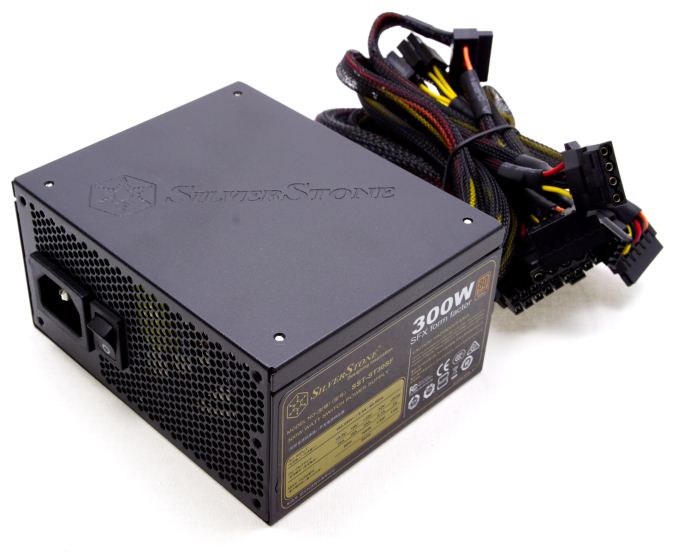
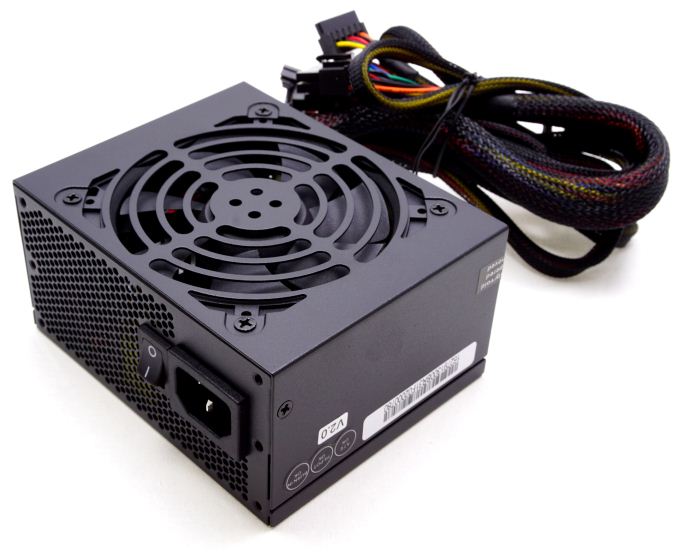
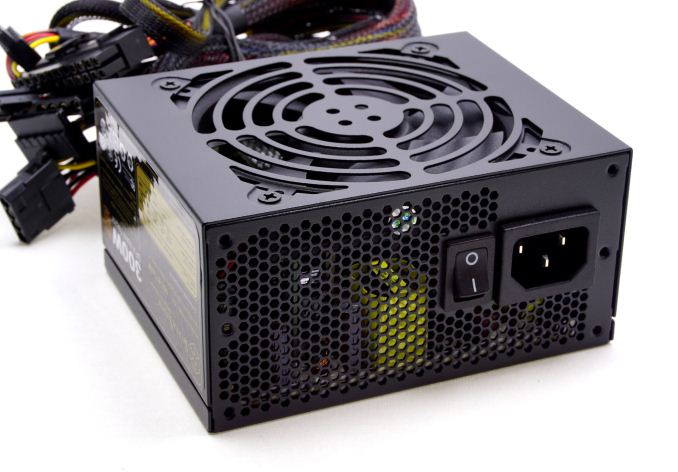
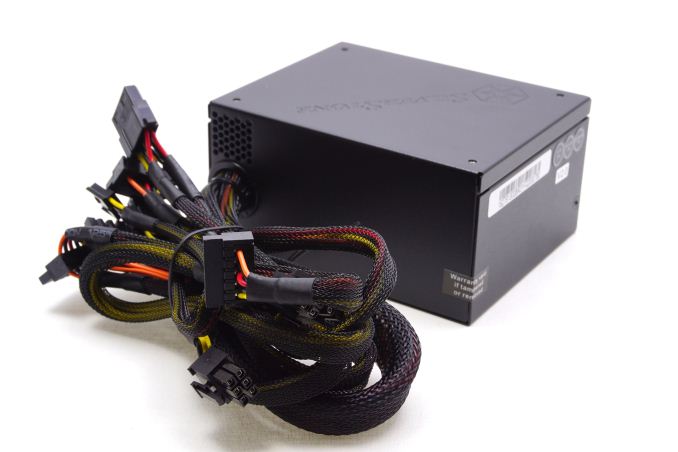
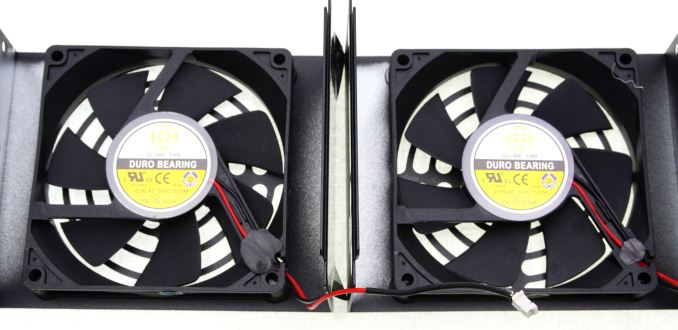
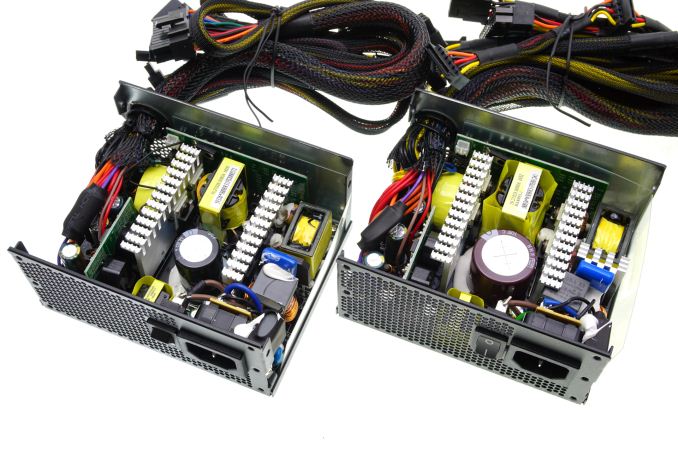
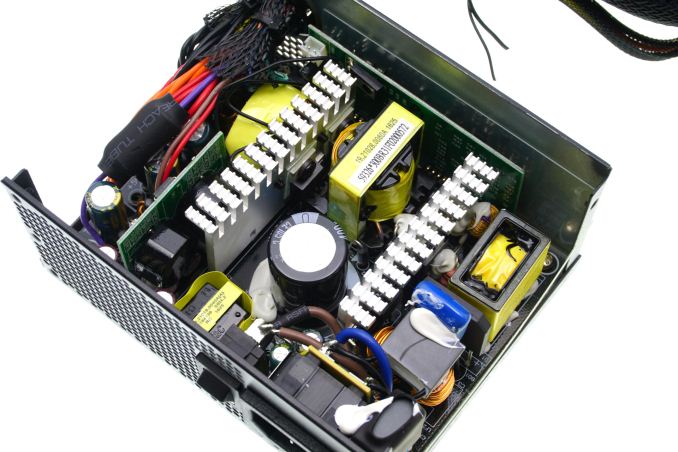


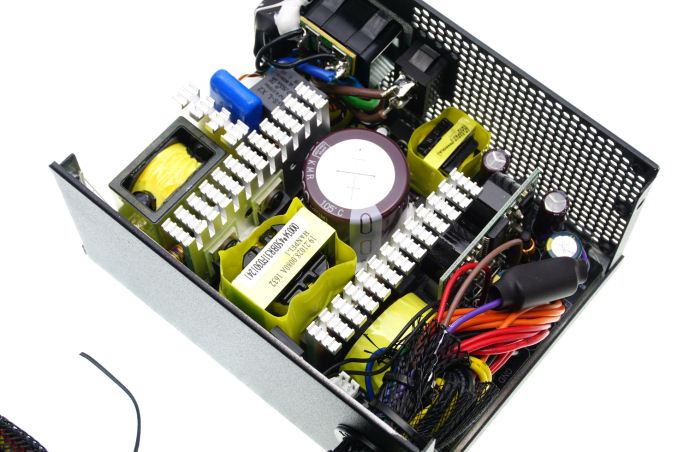








30 Comments
View All Comments
jabber - Thursday, January 26, 2017 - link
PSU is a key component. Plus if you buy a quality one, it may well be the only part that carries over to the next build.Achaios - Wednesday, February 1, 2017 - link
Speaking of it, the only component that has carried itself over to my present build from my first 2008 gaming PC build, is the DVD-ROM drive. It comes very handy with games such as GTAV and the 6 DVD's that came with it.I admit though that if I knew what I know now about PC's, it is possible that I would have kept the original Cooler Master PSU that came with my Cooler Master case, provided that it wouldn't have failed.
Samus - Thursday, January 26, 2017 - link
I personally love PSU reviews. It's interesting to see where corners can be cut to shave costs, and how different manufactures market and how OEM's approach different designs.jabber - Friday, January 27, 2017 - link
I think on my 5820K build back in May I spent more time looking up the PSU than any other part.Samus - Saturday, January 28, 2017 - link
I believe it. I've had a PC Power and Cooling 750 Quad since 2008 go through a PC I kept for 3 years, a mining rig, and now back to a SLI gaming pc. It has had an incredibly hard life being run at 90% load 24/7 on the mining rig for almost 4 year so non-stop, and now it's driving a Xeon workstation with two 980's...It's quiet, has been reliable, and it wasn't even that expensive ($120?) it's 80 Plus but I don't know what tier.
PSU is something everyone should pay attention too. A crappy one could actually result in an unstable PC, especially under load, and a quality one will save money over the long run.
ZipFreed - Tuesday, January 31, 2017 - link
This, so much this. I've seen so many builds over the years both from friends in RL and all over the web with high-end parts and absolutely garbage PSU choices. If you're going to spend $500+ on a CPU you can absolutely afford the +$50 necessary for a quality PSU.I was finally able to build my own rig when I was about 10 years old after always using hand me down parts. I did a ton of research and a quality PSU was something I consistently saw mentioned. Used PCP&C Silencer and have continued to use high-quality PSU's and am currently pushing 30. In that time I've never had a single PSU related failure and have peace of mind knowing my hardware is covered if something happens.
I've been using mainly Seasonic the past 5-6+ years and generally re-use both my PSU, Case and Watercooling loop with 2-3+ different CPU/GPU/Mobo combos before refreshing everything every 18-24 months and repurposing the old stuff. First SS unit is almost 8 years old and it's ran a heavily overclocked system from day 1 and never skipped a beat and is still going strong.
PSU is the lifeblood of your machine, why skimp out?
just4U - Tuesday, January 31, 2017 - link
many on this site likely care simply because they build their own PCs and build for others... I always pay particular interest to which oem is making the unit..and what the reviewers thoughts are on the overall quality.caten - Wednesday, February 1, 2017 - link
I care. +1 for PSU reviews, especially for the more mainstream wattage sizes. I have a mITX system so another +1 for SFX.NZLion - Thursday, January 26, 2017 - link
These seem like very low wattages for modern power supplies. Is my perspective skewed? Is this likely sufficient for the sort of system that would normally use a PSU in the SFX formfactor?For reference, I have a system that uses an SFX PSU, but I went for a 600W unit and even that I felt was a worryingly small margin over the requirements of my system.
flgt - Thursday, January 26, 2017 - link
I would have thought most SFX power supplies are used in small, lower performance machines. Also most likely integrated graphics. So I'm thinking average system power demands of around 100W. As other posters have noted, it's not a good idea to install oversized power supplies as the increased static power kills efficiency at light loads.